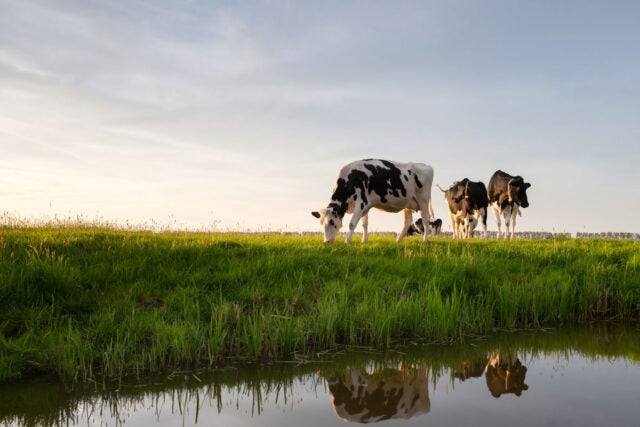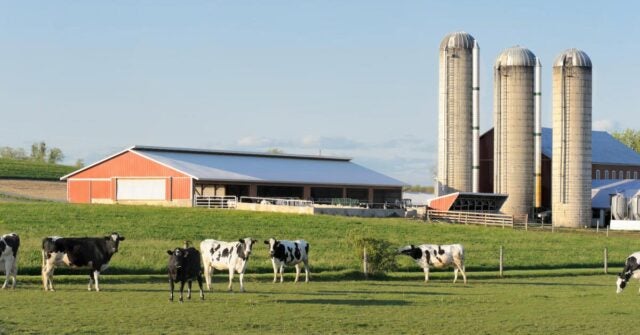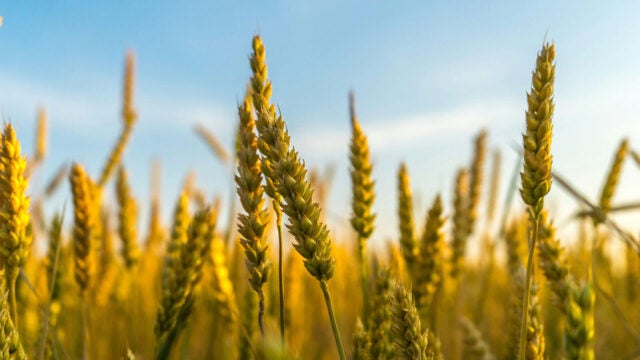- Resources
- Dairy methane accounting: A guide for disaggregating dairy methane emissions from existing corporate greenhouse gas inventories
Resources
Dairy methane accounting: A guide for disaggregating dairy methane emissions from existing corporate greenhouse gas inventories
Published: November 13, 2024 by Katie Anderson
Dairy sector companies leading on climate are increasingly aware of the critical role they must play in driving methane reductions, and as a result, are prioritizing methane mitigation.
To act on methane, dairy companies must first understand their total dairy-related methane emissions. However, until this point, existing technical guidance and accounting frameworks have lacked the direction to disaggregate dairy-related emissions by greenhouse gas (GHG) and process in the value chain (e.g., enteric fermentation, manure management, feed).
The Dairy Methane Action Alliance has published this first-ever publicly available technical guidance, with a foreword from the International Dairy Federation, to address this gap, providing a framework for dairy companies to disaggregate methane emissions using commonly referenced emission data sources.
A step-by-step approach
This guide takes a step-by-step approach to developing a methane inventory. It first walks a company through the steps needed to ensure their corporate GHG inventory is set up to allow for methane disaggregation and then details the methodology for disaggregating methane.
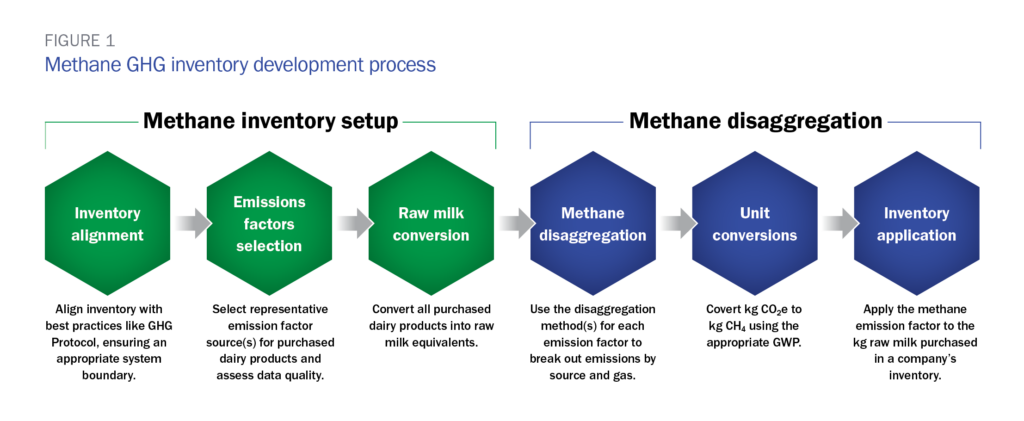
Scaling action and ambition
This methane accounting guide is the first document released as part of the Dairy Methane Action Alliance initiative to drive action on dairy methane. Upon working through this guidance document, a company will have the knowledge and tools needed to develop a methane-specific inventory from their corporate GHG inventory. From there, companies can then determine their methane hotspots for public disclosure to help prioritize action in driving meaningful dairy methane emissions reductions.
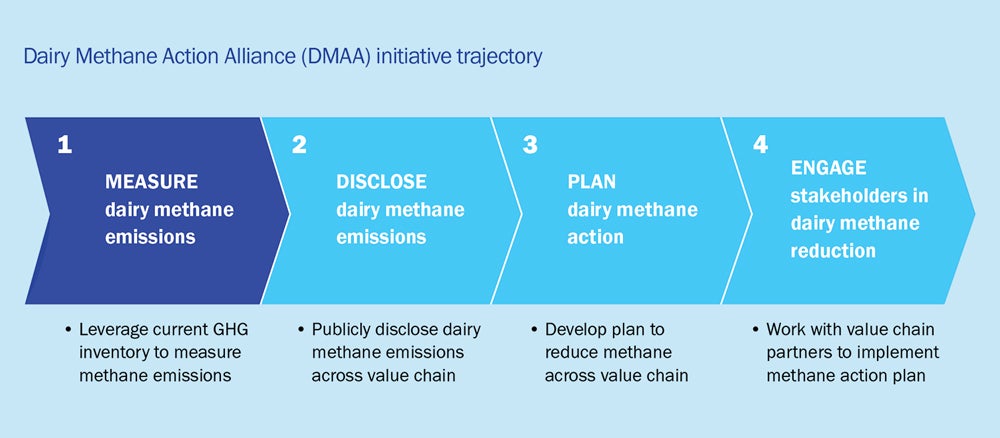
Sources of dairy methane emissions
This guide describes the largest sources of cradle-to-farm gate methane—enteric fermentation and manure management. It covers the most material methane emissions sources since this work focuses on addressing the main methane mitigation opportunities.
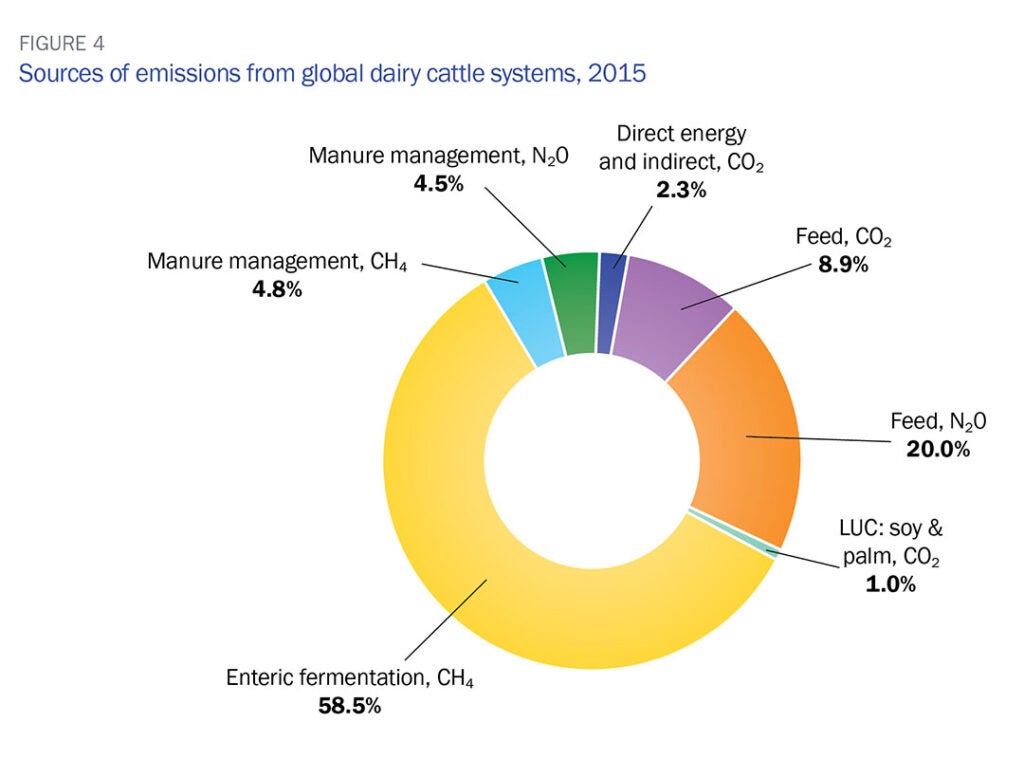
Image Source: Bizzarri, G. (2019). Climate change and the global dairy cattle sector: The role of the dairy sector in a low-carbon future.
Data quality
High-quality and transparent data are necessary to understand the magnitude of dairy methane hotspots within a company’s value chain and provide companies with the basis to act on and reduce their dairy methane. Having visibility into the sources of methane (i.e., methane-emitting processes) and quantity of methane emitted allows companies to identify the key areas for methane mitigation. The more accurate and detailed the data that is gathered, the more easily companies can identify targeted methane mitigation strategies.
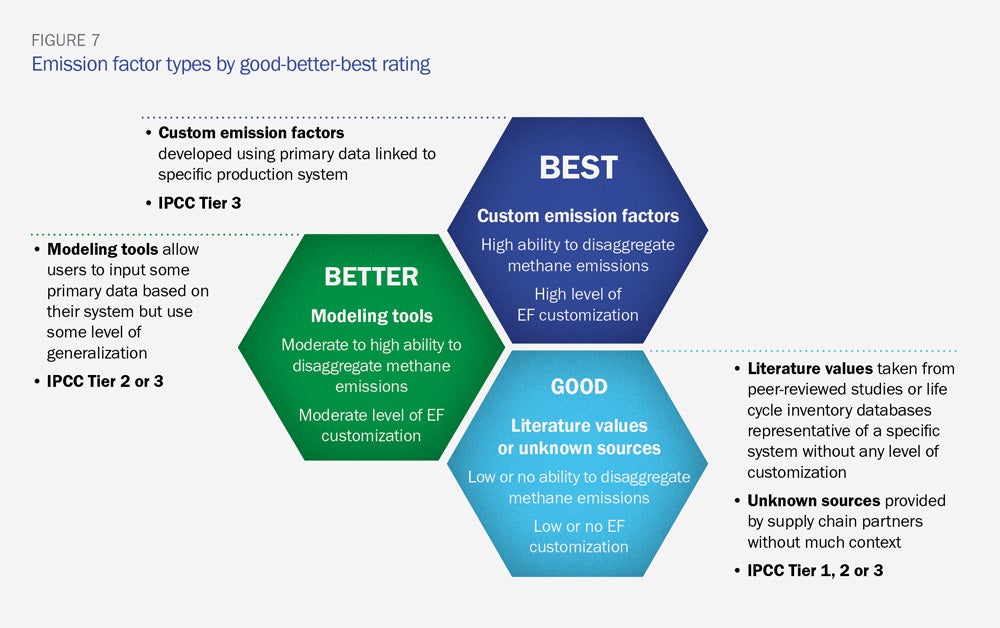
Next steps
After accounting for dairy methane emissions, companies need to follow best practices to annually and publicly disclose them. Read our disclosure guide for a step-by-step framework for disclosing dairy methane emissions.
Would your company like to learn more about the Dairy Methane Action Alliance and the benefits of peer-to-peer learnings and support from EDF experts in building your dairy methane action strategy?
Reach out to our team here.
Dairy methane accounting
A guide for disaggregating dairy methane emissions from existing corporate greenhouse gas inventories.
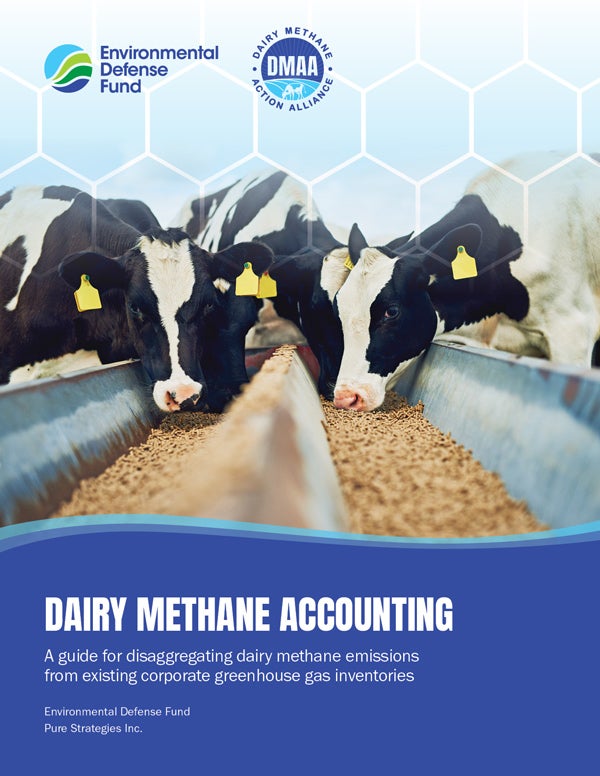
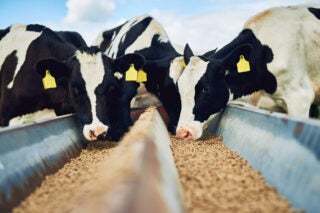
-
Dairy Methane Action AllianceLearn More
-
Dairy Methane DisclosureView Guide
-
Dairy Methane Action PlanView Guide
-
Dairy Methane Stakeholder EngagementView Guide

